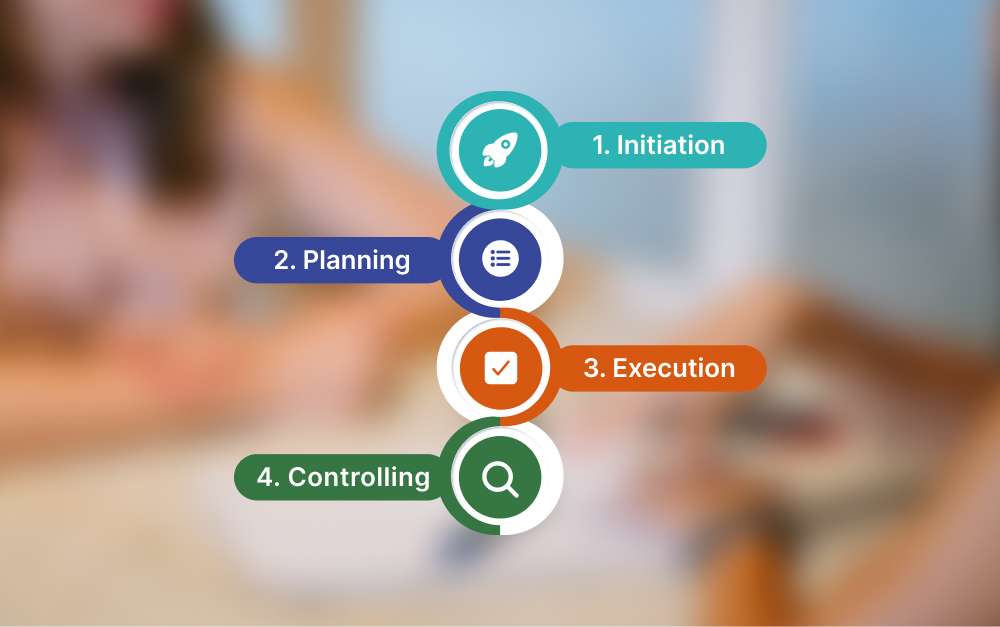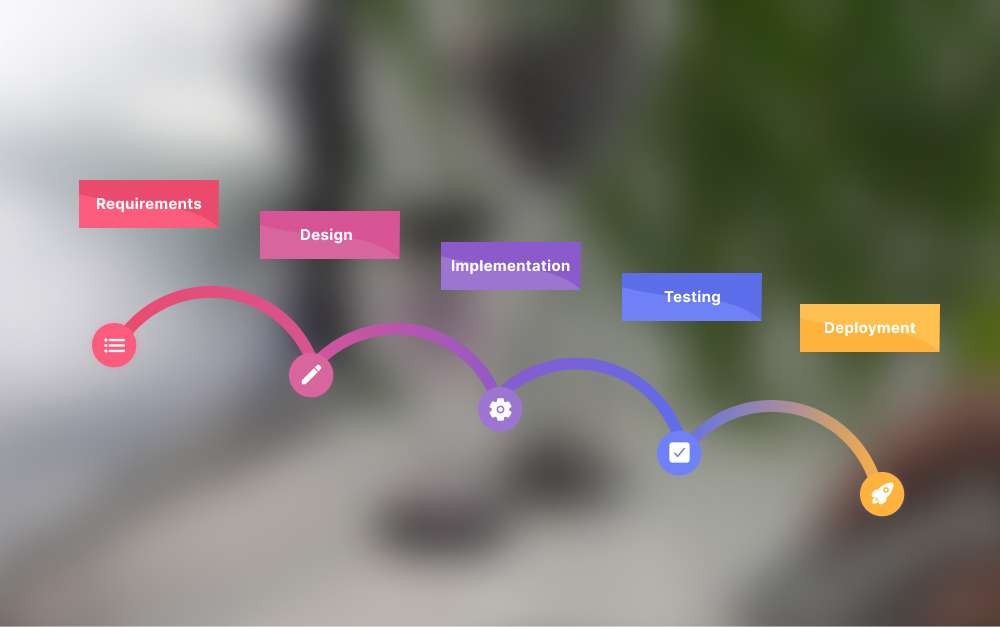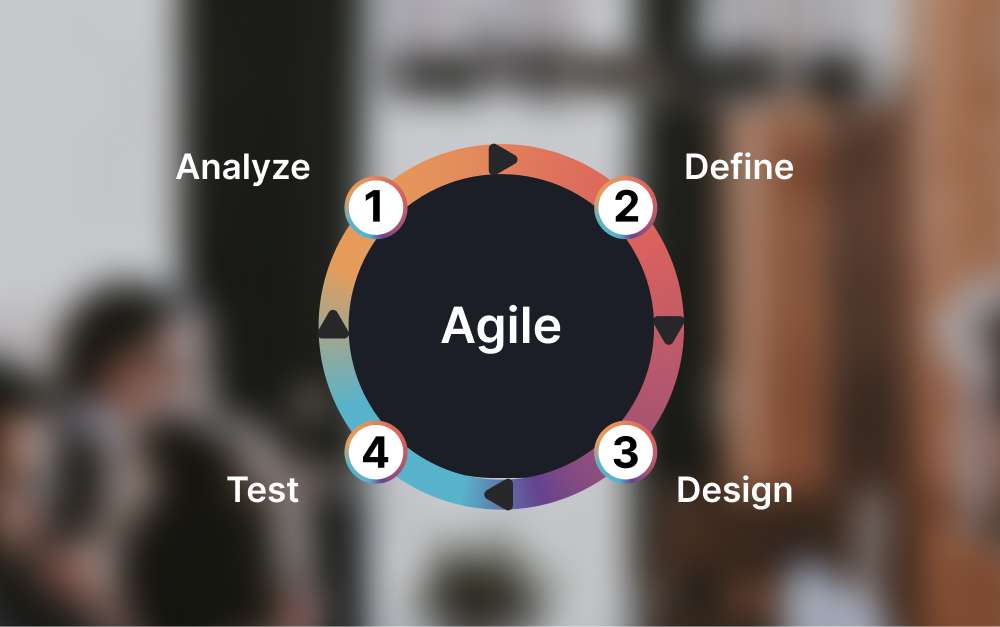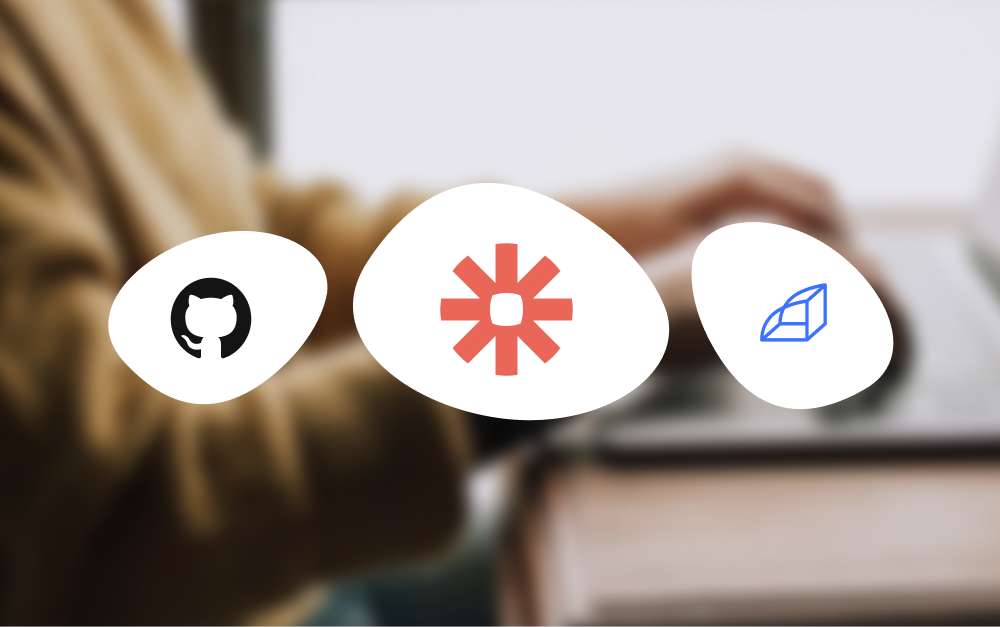What is a Project Management Framework?
To be a successful project manager it’s crucial to master the implementation of project management frameworks (PMFs). The last thing you want is to jump from project to project without making important deadlines or wrap up projects with sub-quality work.
Frameworks provide different ways to organize and manage tasks and resources within a single project. Important elements include a clear-cut overview of what needs to be done, who is in charge of each activity and a timeline.
Understanding the most common PMFs, how to implement them and how to decide which one is the most suitable for you can come in handy regardless of industry. Whether you're in IT, marketing, freelance or recruiting, these frameworks can bring more structure, accountability and documentation to your projects.
What is a project management framework?
A project management framework is a set of rules and activities that organize the management of different stages of a project, from planning to execution and monitoring. Implementing such a framework provides project managers with a way to track progress and ensure that the different stages and tasks are completed on time.
Project managers often use task management software to delegate activities, keep track of work and manage the different stages of the project management framework.
Why Is Having a Project Management Framework Important?
Project management frameworks help your team complete overall projects, tasks, and timelines efficiently. However, not all project management frameworks are created equal. Each has its pros, cons, and characteristics that may or may not align with your project type.
Having a well-defined process becomes especially critical with asynchronous work. People need to follow the same steps and understand the overall framework so information can be passed between team members without too much delay.
The main goal of project management frameworks is to ensure that a final deliverable is completed on time, within budget, and without errors. Also, it keeps everyone accountable for their tasks and responsibilities while also providing easy to access documentation.

What is the Lifecycle of a Project Management Framework?
The lifecycle of a project management framework consists of four phases: initiation, planning, execution, and controlling or monitoring. These phases are interrelated and work together to ensure your project is completed on time and within budget.
Below is a brief overview of each stage of the process:
1 Initiation
Creating a plan for your project is essential because it allows you to stay on track and achieve your goal. The initiation phase is where you would define the scope of your project and discuss final deliverables with stakeholders.
Understanding the purpose behind the project and defining measurable outcomes is essential. In this phase, you define what you want to achieve with the project and identify what tools you need. Then, you can determine how much time and resources are necessary for the project to succeed.
2 Planning
The planning phase involves creating a work breakdown structure (WBS). A WBS is essentially an outline that shows how each task contributes toward achieving an objective. This WBS breaks down an overall goal into smaller, more manageable pieces you can assign to team members.
Each task should have a description detailing its deliverable(s), who is in charge of completing the activity, urgency, start and due dates, etc. During this time, you also create your resource calendar by assigning resources to tasks based on their availability (or anticipated availability).
Resources can be anything from time availability of team members, financial resources or dedicated software required to complete the activity.
Communicating your ideas and opinions to your team is essential during this stage. The input is helpful to get a more realistic take on how long certain activities might take, who should be in charge, and what to expect of the final output.
You should also identify risks involved with your project and decide how to avoid them or deal with them if they happen.
3 Execution
Execution is one of the most crucial stages in project management because it determines whether the project will be successful. A project can be completed on time and within budget if executed well. However, if executed poorly, a project may fail or require additional resources and time to complete.
The goals of the execution stage for the project manager include:
- Ensure teams have adequate resources to complete their tasks
- Identify any bottlenecks that affect project progress
- Manage the scope and schedule of task assignments so teams can complete them on time
- Check that all deliverables conform to specifications and are ready for acceptance testing
How you execute a project is especially important for remote teams. During this stage, many projects fall apart because they don't have clear roles and responsibilities. Another problem could be that individuals don't understand their deliverables.
4 Controlling and Monitoring
Once execution has begun, it's crucial to monitor progress on an ongoing basis so that adjustments can be made as needed. Project managers should also watch for problems during execution to address them quickly before they become significant problems affecting completion dates.
During control, you use metrics to gauge the success of your project so far. These metrics will be included in your sprint retrospective meetings if you're using Agile methods such as Scrum or Kanban.
Manage daily activities effectively to gain more control over your time. You need to see what each team member is doing during the day and what you want to accomplish.
Finally, you analyze your progress against your original plans, make changes, and update schedules, if necessary, to stay on track.
A project management framework template allows you to organize your projects without starting from scratch. It is a step-by-step process that helps you complete your project on time and within budget.

The 4 Most Common Project Management Frameworks
There are many different project management frameworks, but the most common ones are Waterfall, Agile, Scrum, and Kanban. Each framework has a slightly different approach to project management, but they are equally effective.
Learn more about the four project management framework examples below.
Waterfall Project Management Framework
Sequential phases of work characterize a waterfall management framework. The stages include analysis, design, and implementation. This framework is known as the "waterfall" model because it typically proceeds downward.
This project management approach is the most traditional, where all phases are completed before the next phase begins. The framework is a project management process based on the idea that each step in the process is a deliverable that needs to be wrapped up before moving on.
The waterfall project management process has a defined beginning, middle, and end. The process begins when the project manager has a clear idea of what the final output should be. At this point, the project manager defines resources, sets goals, and defines the project's scope.
The framework has five basic steps:
- Requirement analysis – Define goals for the project and identify potential problems that may arise during its execution.
- Design – Perform detailed planning based on the WBS created during preparation.
- Implementation – Execute tasks based on plans, control their progress, manage changes and risks, complete quality assurance activities, etc.
- Testing: Test whether functionality at the end of each stage aligns with the initially set goal.
- Deployment and maintenance – This phase reflects on the benefits of implementing a solution and determines whether it is worth investing further.
Finally, if the project fails or the frame changes, you repeat the project from the beginning with the new goal.

Pros of the Waterfall Model
- The waterfall model is often effective because it focuses on the end result and what should happen after each stage is completed.
- Clear goals leave a holistic vision of what the project timeline, scope and resources look like from a very early stage.
Cons of the Waterfall Model
- The Waterfall model has been criticized for its inability to respond to changing market conditions, technical issues, or other unexpected problems.
- The model requires completing each phase before moving on to the next. This results in very little room for feedback or changes once you move to the next stage.
When to Use the Waterfall Framework
The Waterfall is popular among large companies with highly structured processes.
It's most suitable for large projects with clear start and end dates and doesn't require frequent changes during development. The waterfall model is typically for longer-term projects requiring a comprehensive plan or process to follow closely to ensure completion.
Alternatively, if you want to complete everything in one phase before progressing to the next step in a project, the Waterfall framework is a valuable plan.
Agile Project Management Framework
Agile project management frameworks are software development methodologies that focus on adapting to change rather than following a predefined plan.
It's a lightweight approach to project management that incorporates many of the best practices from Lean, Six Sigma, and other methodologies. These frameworks offer the flexibility required for business environments that are constantly changing.
This framework requires frequent collaboration between teams who work in short cycles called "iterations." Iterations help teams deliver at regular intervals (usually two weeks) to get clients' feedback throughout the process.
The Agile approach to project management comprises the following:
- Agile product vision – A product vision is not a written document but a mental picture. The product owner describes it verbally and writes it down if necessary.
- Documentation (e.g., user stories, product backlog) – File storage and information keeping processes have everyone on the same page.
- Product backlog – Product backlogs are used to forecast and plan upcoming releases of features or software development activities (called sprints).
- Sprints – Sprints are iterations that last between one and two weeks. Often, you use sprints to develop working software.
The Agile framework meets customer needs through iterative development cycles and frequent delivery of working software. This approach is more adaptive than the Waterfall framework, which means it can address changes in requirements during development without causing delays or cost overruns.

Pros of the Agile Model
- Agile projects are customer-centric.
- Agile projects are flexible because they build upon prior work rather than requiring you to start from scratch each time a new phase begins.
- You can quickly change direction as needed.
Cons of the Agile Model
- The flexibility comes with trade-offs in speed and predictability. You won't know exactly when you will be done until later in the project lifecycle.
- It can be challenging to manage stakeholders, resources and timeline for very large projects as projects can quickly grow out of control.
When to Use the Agile Framework
The Agile framework works best when a project is small or highly innovative. When you need to prioritize the customer, an Agile project framework could be one of the best options.
Agile projects are often used in software development and other industries like manufacturing and innovation.
They work well in situations where your team needs to change direction frequently or where there's uncertainty about what will happen next. There are two common Agile methodologies often user: Scrum and Kanban. We'll go over each one in more detail next.
Scrum Project Management Framework
The Scrum project management framework is a highly structured and usually time-boxed Agile methodology that uses a team of cross-functional experts to build a complex product, think of mobile app development, new SaaS applications, or other large-scale projects that require a broad skill set within a team to be completed.
The goal of using Scrum is to produce valuable deliverables in short cycles. It's best for teams of up to nine people, but you can scale it as needed. Some common activities in the Scrum methodology:
- Sprint Planning – In this stage, the team gets together and decide what they'll work on during the upcoming sprint. They often focus on one feature at a time and plan how long it will take them to complete it.
- Team Standup – In this update, everyone on the team answers three simple questions: What did you do yesterday? What will you do today? Are obstacles standing in the way? This update can be done daily or weekly depending on the relevance of the updates between team members. At any given time, you can address problems before they get out of hand.
- Sprint Review – This demo session allows stakeholders to see what the team has been working on over the past few weeks or months. Often, you'll have a live demo or presentation showing the deliverables.
Each team member can be responsible for multiple roles throughout the project. As an Agile methodology, Scrum uses smaller iterations but has more defined roles with specific responsibilities and meetings to keep project members on track.

Pros of the Scrum Model
- One of the fastest ways to complete deliverables.
- Sprints divide the project into easily manageable tasks.
- The framework is flexible, which means it can fit the type of project you are working on.
Cons of the Scrum Model
- It can be challenging to onboard a team to scrum if they’re not yet familiar with project management frameworks.
- It may be challenging to scale the project framework to larger teams across a lot of different divisions.
When to Use the Scrum Framework
As a guideline, the Scrum process might be the best method to use when your project involves a long list of tasks. The model is also suitable if you often encounter bottlenecks or when you cannot estimate the completion date.
Scrum is most effective when you have groups of people across divisions who need to collaborate, like software developers with designers and product managers.
Scrum can be useful in many industries, from manufacturing and retail to healthcare and IT services.
Kanban Project Management Framework
The Kanban framework is a project management methodology developed by Toyota in the 1950s. It's based on lean manufacturing methods and uses cards, boards, and bins to visualize workflows.
The project manager is responsible for setting up the board, defining tasks, and assigning them to team members. Kanban's primary goal is to help teams visualize work, prioritize and limit work-in-progress (WIP), and eliminate bottlenecks to improve productivity and flow.
Two critical concepts behind Kanban:
- Work in process (WIP) limit: The maximum number of tasks executed at any given time. To increase productivity, you should reduce WIP as much as possible by limiting the number of open items on your board. The fewer items you have on your board, your focus will be better.
- Visualization: Kanban boards are typically visualized using a card system on a task board. The card columns represent different stages of completion (to do, in progress, completed). Cards move from column to column through various stages in their workflow. As a result, teams can visualize their progress more quickly than by using lists or spreadsheets.
Kanban uses a board with columns representing different stages in the project lifecycle (e.g., concept, design, development, etc.). Cards represent tasks and move between the various columns as they pass different stages in the process.
The Kanban board can take many forms. You don't need a physical board with post-it notes. Instead, you can use remote work tools that track tasks in progress, what needs to happen next, and when each job will be completed.
As tasks move down through each column, they're checked off so everyone knows what's complete and what still needs doing before they can move on to the next stage in their workflow.

Pros of the Kanban Model
- It is an excellent framework for identifying what is essential and what is not.
- You can use the Kanban framework in many industries, from software development to manufacturing and retail.
Cons of the Kanban Model
- Can be hard to implement if your project is not easily separated into smaller tasks
- Challenging or not optimal to use if there are no predefined stages for activities in your project.
When to Use the Kanban Framework
Kanban is a simple project management framework that helps teams visualize work.
It's an excellent fit for both complex and simple projects with multiple stages of completion. The Kanban methodology was initially developed at Toyota in the 1950s as an alternative way to optimize manufacturing workflows. Since then, many industries have adopted the model.
Kanban works best when you have multiple people working on a team that needs to collaborate on tasks or projects with multiple phases or steps.
How to Deploy a Project Management Framework
The project management process can be daunting, but Rock ensures your work process is easier and more productive. By using specific features in Rock, you can organize any project according to your chosen project framework.
Below are some ways to help you manage your workflows to succeed in your project management process.
Kanban in every space with a task board
In Rock, if you go to the Tasks mini-app, you can find an option to view tasks according to the board view. This board view allows you to leverage the Kanban framework with options like:
- List - What stage of a process is a task in? E.g. to-do, doing, done.
- Assignees – Assign one or multiple team members to a task.
- Assignee status - individual status: none, in progress, blocked or completed.
- Followers - Any people that want to receive notifications but not assigned to the work.
- Comments - Discuss at the task level
- Start dates – Add a start date to your task.
- Due dates – Add a due date to your task.
- Priorities – Set the urgency for each task.
- Labels – Create labels like 'in progress,' 'reviewing,' or 'sent to the client.'
- Checklists - Are there smaller activities within a task? Add them in a check list format.
- Attachments - Add files from your device or cloud storage providers such as Dropbox, OneDrive and Figma.
- Sprints - Assign a task to a sprint.
- Custom fields - Additional fields tasks may have, including dropdown menus and large or short text fields.
Check that everyone on the team understands their role in the project and how they fit into the larger picture. You can move tasks between stages as your project progresses. Then, list how much time and resources you need for the project.

Calendar View
For frameworks like Waterfall, the calendar view is an essential feature. You can view task deadlines and set project timelines.
For example, if you have a task without deadlines, you can still indicate a timeframe during which an assignee should be working on the task by adding start and due dates.
This feature is helpful for the Waterfall framework because it allows you to see how various activities are organized by date. So, you'll easily know what date tasks are due within specific project stages.

File Integration
Rock's file management system enables you to share project-related files with the team. Add files to your tasks, notes or overall project spaces to keep documentation easily accessible. You can connect your cloud storage provider with the files mini-app.
You can include:
- Google Drive
- Dropbox
- OneDrive
- Figma
- Adobe Creative Cloud
- Smartsheet
- Miro
- Notion
Rock's Files mini-app is fully integrated with tasks and notes. You can attach important information to activities or documentation and easily access information without having to share links.

Tap to Organize
Suppose you click on a message in a space. Let's say someone leaves a chat message relevant to one of the tasks in my project. You can easily move that message into an existing task. You can also create a topic or a note if there are messages you need to discuss further. This way, you can ensure that no information goes missing.
Quickly move messages to tasks, notes or comments on Rock. You can also move messages into new tasks or add them to comments on already existing tasks. Similarly, you can drag and drop the information into comments to make discussions more actionable.

Additional Rock PRO Tools
Under the PRO and TEAMS plans, you gain the additional ability to automate tasks.
For example, suppose you receive emails or information from third-party sources. You can integrate these platforms with Rock using webhooks and unite all your data in one project management tool. You can set up bots to automatically create tasks and more.
Some integrations include:
- GitHub
- Zapier
- Rollbar
The PRO and TEAMS plan both offer a dedicated sprint feature. Add start and due dates to organize work by sprint quickly. Once you add sprints to a few different screens on your board, you can manage them in convenient ways. For example, you can filter tasks and organize your progress board using sprints.

Final Thoughts
Instead of logging in to multiple platforms daily, Rock helps you quickly bring your project information together. There's no need to sign in to the workspace whenever you want to view an update. In addition, team members can send messages and create tasks without switching between platforms.
Project management can be challenging at first. It needs you to be organized, focused, and dedicated to the project. But all these traits are not enough. You need a proper framework.
When a project has a framework, it is much easier to set up more productive communication strategies with other team members. You'll find a framework especially helpful in asynchronous work to ensure the project is completed without any delays.






















